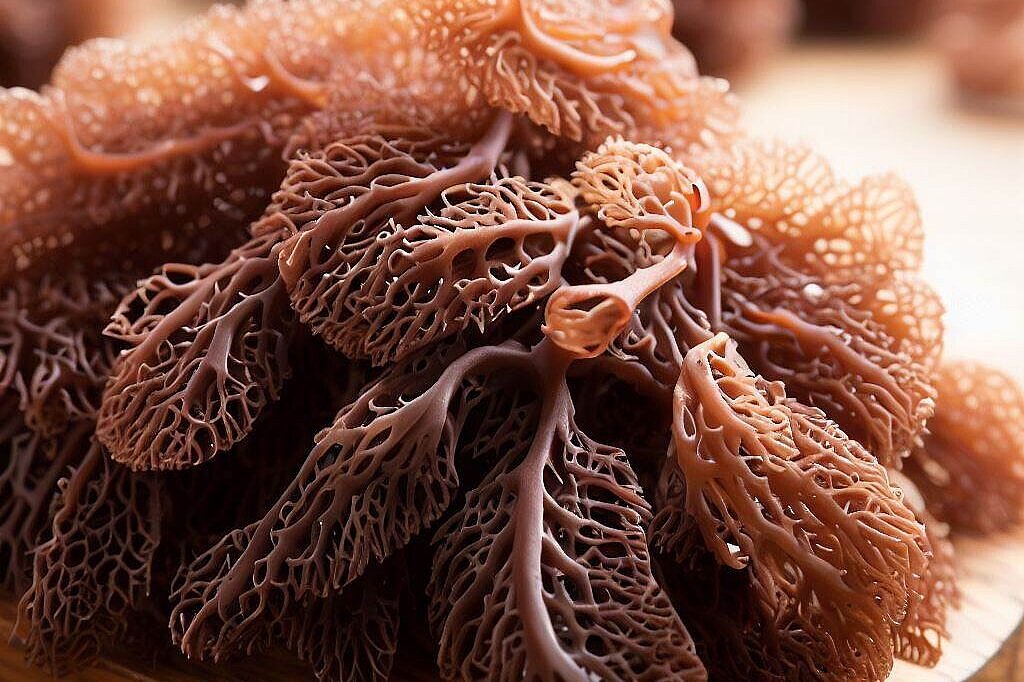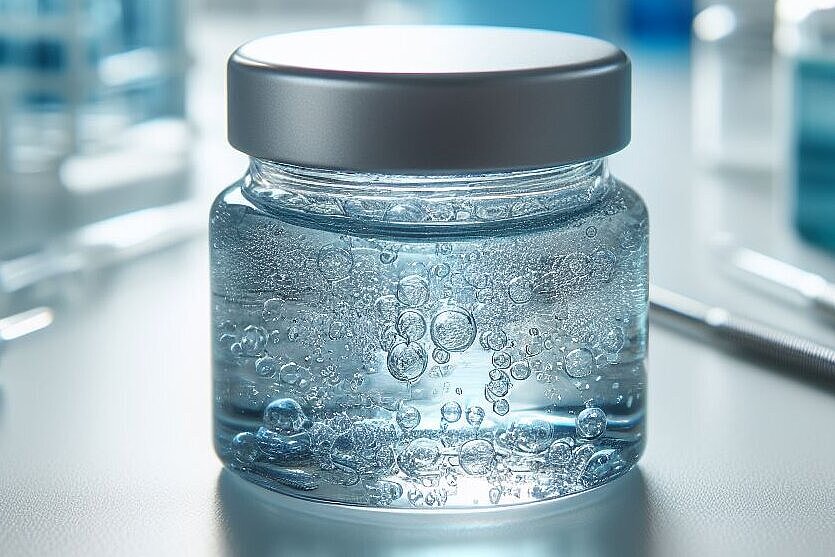Alginic acid

You may have wondered what alginic acid is and why it is included in some dog foods. In this article, you'll find out everything you need to know about this ingredient, its advantages and disadvantages and how you can feed it to your dog in the best possible way.
What is alginic acid?
Alginic acid is a carbohydrate that occurs in the cell walls of brown algae. It has a gel-forming effect and is therefore approved as a food and feed additive under the number E 400. Alginic acid is often used in jams, puddings or cream to achieve the desired consistency.
What are the benefits of alginic acid for dogs?
Alginic acid can have some positive effects on your dog's health when fed in moderation. For example:
- It can aid digestion by binding stomach acid, preventing heartburn or stomach irritation.
- It can support the intestinal flora by acting as a prebiotic and stimulating the growth of beneficial bacteria.
- It can improve dental hygiene by reducing plaque and thus preventing tooth decay or tartar.
- It can promote skin and coat health by providing minerals such as calcium, sodium, potassium, manganese, zinc, iron and iodine.
What are the disadvantages of alginic acid for dogs?
Alginic acid is not suitable for every dog and can also have some negative effects if fed too often or too much. For example:
- It can interfere with the absorption of minerals by binding them and thus eliminating them from the body. This can lead to a lack of important nutrients.
- It can trigger allergic reactions if your dog is sensitive to algae or other ingredients. This can manifest itself in skin rashes, itching or breathing difficulties.
- It can lead to obesity if your dog eats too much of it. Alginic acid has a high fiber content and can therefore increase the feeling of satiety. This can lead to your dog eating less and therefore consuming fewer calories. However, if you give him alginic acid in addition to his normal food, this can lead to an excessive calorie intake.
What is the best way to feed your dog alginic acid?
If you want to feed your dog alginic acid, there are a few points you should bear in mind in order to reap the benefits and avoid the disadvantages. Here are some tips:
- Only feed alginic acid in small amounts and not daily. Overdosing can lead to the problems mentioned above.
- Only feed high quality alginic acid from natural sources. Avoid artificial or chemically treated products that may contain harmful substances.
- Only feed alginic acid in combination with other foods. Don't just give your dog alginic acid on its own, but mix it into his food or give it as a treat.
- Only feed alginic acid after consulting your vet. If your dog has health problems or is taking medication, you should find out beforehand whether alginic acid is suitable for him.
Alginic acid is an ingredient found in some dog foods that can have both benefits and drawbacks for your dog. If you feed it in moderation and in good quality, it can improve your dog's digestion, intestinal flora, dental hygiene and skin and coat health. However, if you feed it too often or too much, it can impair the absorption of minerals, trigger allergic reactions or lead to obesity.
Properties 7
Are you looking for other ingredients with a specific property?
Just click on them to find more.
If you notice any signs of hypersensitivity or poisoning in your dog, you should see your vet immediately. We are not a substitute for a vet, but we try to be as accurate as possible. Every dog reacts differently and we recommend you get a second opinion or consult your vet if in doubt.
Stay healthy and take good care of your four-legged friend!😊
Similar to Alginic acid
Carrageenan has several positive properties that make it interesting for the production of dog food. Firstly, it improves the consistency and appearance of wet food by creating a creamy texture and...
Agar-agar is an extract from red algae, which mainly grow in Asia. It has a gel-like consistency and can be used as a thickening or gelling agent. Agar-agar is tasteless and contains no animal...
Pectin is a plant polysaccharide found in the cell walls of fruit and vegetables. It is a natural gelling agent that is released when fruit is cooked or frozen. Pectin is often used as an additive...
CMC is a derivative of cellulose, a plant substance consisting of sugar. CMC is formed when cellulose is treated with caustic soda and chloroacetic acid. Some of the hydroxyl groups of the cellulose...



